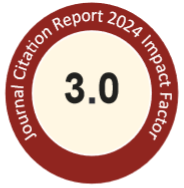Keywords
daily intake, geographical variations, Taiwan air quality regions, probabilistic approach
Abstract
High-fat food intake is the main source of dioxin-like compounds for humans, such as consumption of meat, dairy and eggs, and seafood products. Fruits, vegetables, and cereals have relatively low levels of dioxin-like compounds, but because of high consumption they also contribute to the food-borne intake. It is necessary to clarify dietary dioxin exposure affected by different food contamination levels and dietary habits among different geographic areas. We aimed to evaluate chronic dietary PCDD/Fs and DL-PCBs exposure in 725 individual foods in 14 categories in 6 Taiwan air quality regions (AQRs) and a total of 2,441 foods from 2004 and 2018. We estimated daily PCDD/Fs+DL-PCBs intake on the basis of sex- and age-specific foodstuff ingestion rate and PCDD/Fs+DL-PCBs concentrations using a probabilistic approach. PCDD/F+DL-PCB levels among the different sampling periods exhibited a decreasing trend in fish and aquatic products (from 0.384± 0.764 to 0.206± 0.223 pg WHO05-TEQ g-1 w.w.)(p for trend= 0.043), livestock products (from 0.133± 0.298 to 0.035± 0.043pg WHO05-TEQ g-1 w.w.), eggs (from 0.221± 0.373 to 0.056± 0.048pg WHO05-TEQ g-1 w.w.) (p for trend= 0.002), and dairy samples (from 0.066± 0.075 to 0.024± 0.026pg WHO05-TEQ g-1 w.w.) (p for trend= 0.001). All lifetime average daily doses (LADD) were below provisional tolerable monthly intake (PTMI) but higher than the TWI for PCDD/Fs and DL-PCBs in food. The percentages of the contribution of each food group to the total dietary intake of TEQPCDD/F+PCB in different ambient air dispersion areas and age groups. The total daily intake of PCDD/Fs and DL-PCBs by Taiwanese differed between AQRs (0.188 to 0.397 pg WHO05-TEQ kg-1 b.w. day-1). The observed geographical variations were likely due to differences in food habits, cuisines, culture and levels of environmental contamination among various regions in Taiwan. By sensitivity analysis, we have identified the major contribution to LADD, which was the dioxin levels in marine fish, freshwater fish and fish related products, and followed by dioxin levels in duck eggs. In addition, marine and freshwater fish consumption rate accounts more than 10.2%. These major exposure variables was also consistent with the findings of total daily intake in different AQRs.
Recommended Citation
Lee, Ching-Chang; Chang, Wei-Hsiang; Lin, Hsin-Tang; and Chang, Jung-Wei
(2020)
"Spatiotemporal Patterns of Polychlorinated Dibenzo-p-dioxins and Dibenzofurans and Dioxin-like Polychlorinated Biphenyls in Foodstuffs in Air Quality Regions in Taiwan,"
Journal of Food and Drug Analysis: Vol. 28
:
Iss.
3
, Article 3.
Available at: https://doi.org/10.38212/2224-6614.1216
Highlights
A3-Supplemental Table.pdf (340 kB)
Supplemental Table
A3_Graphical Abstract.jpg (334 kB)
Graphical Abstract
Creative Commons License

This work is licensed under a Creative Commons Attribution-Noncommercial-No Derivative Works 4.0 License.


Abstract Image